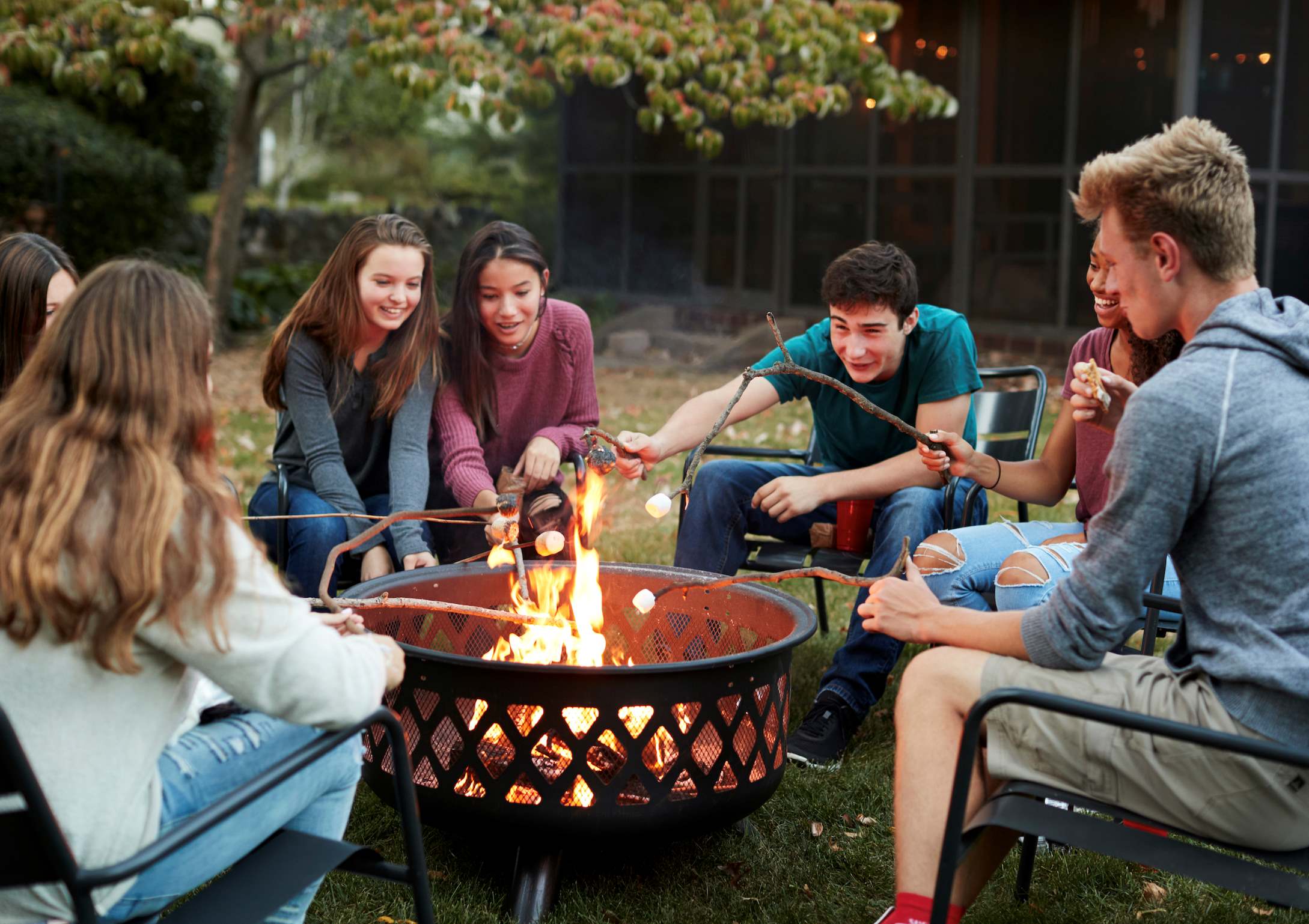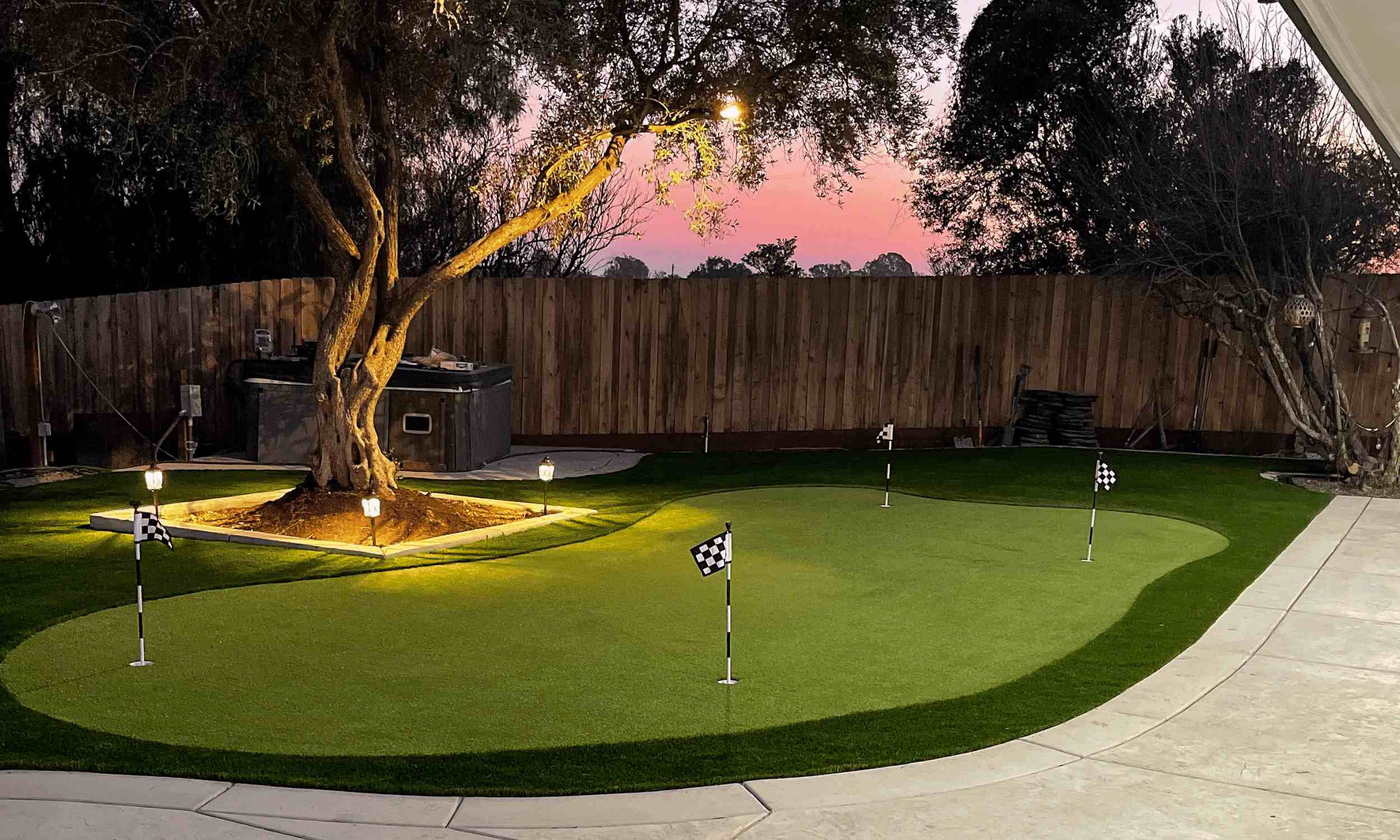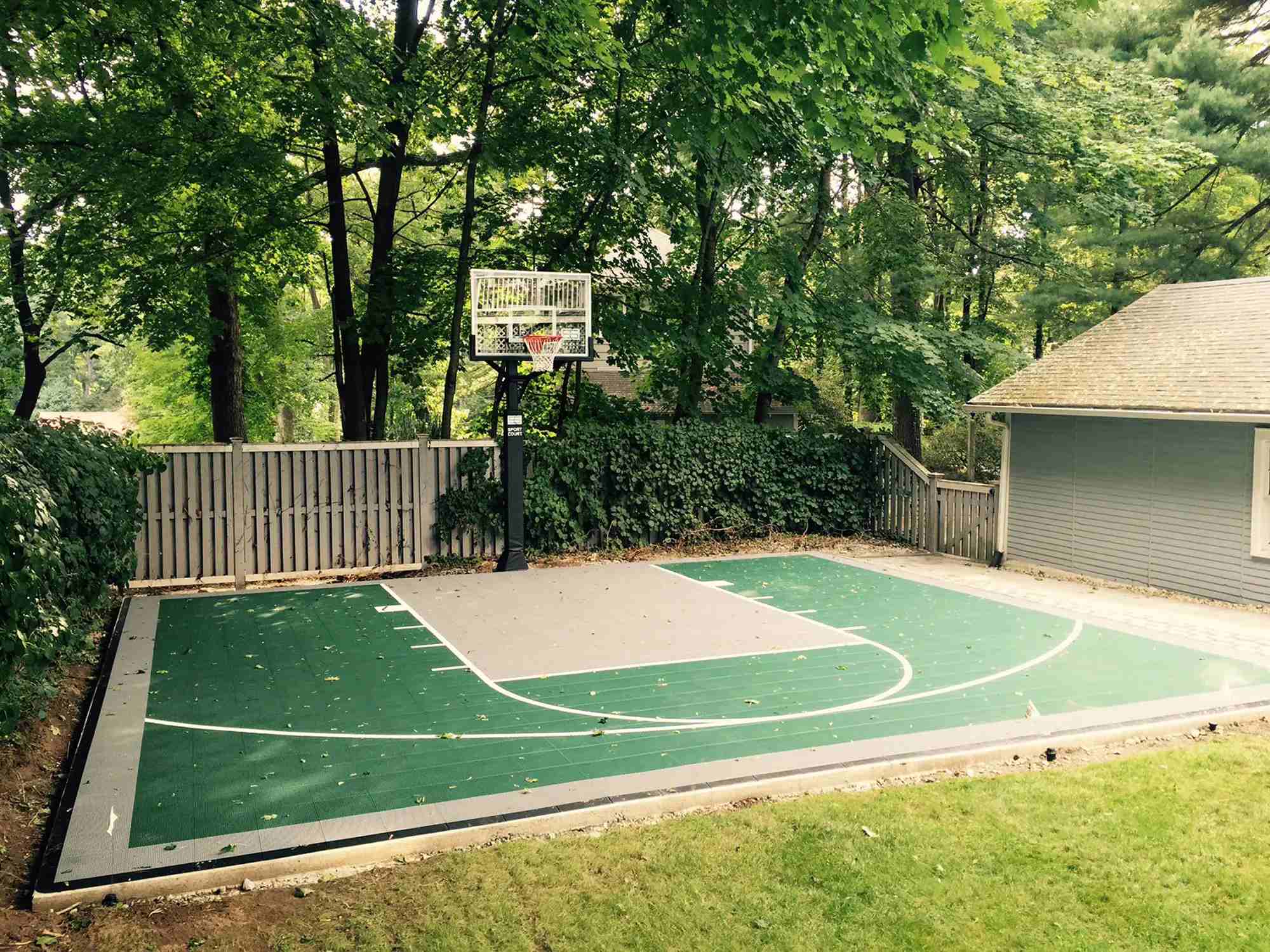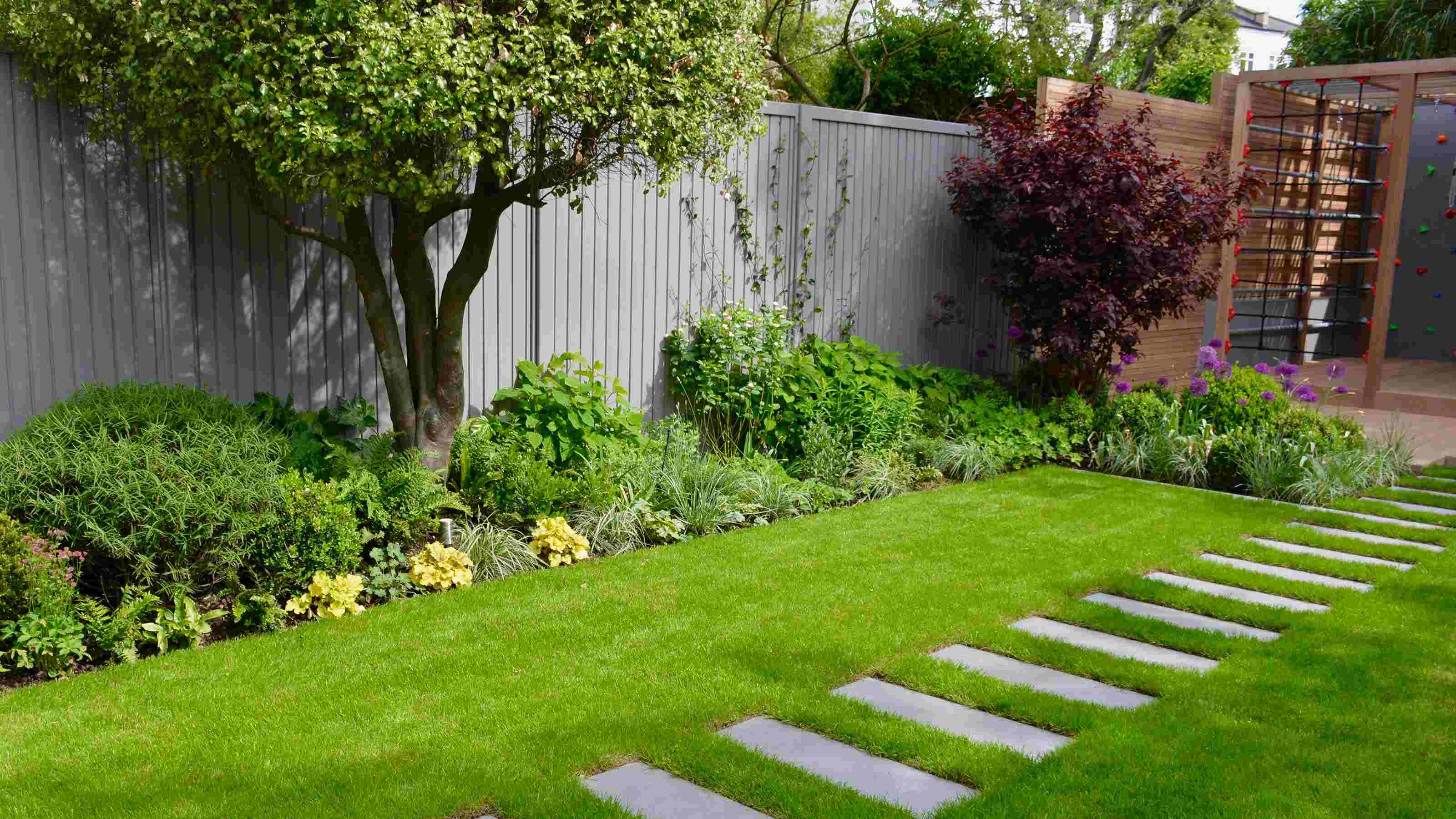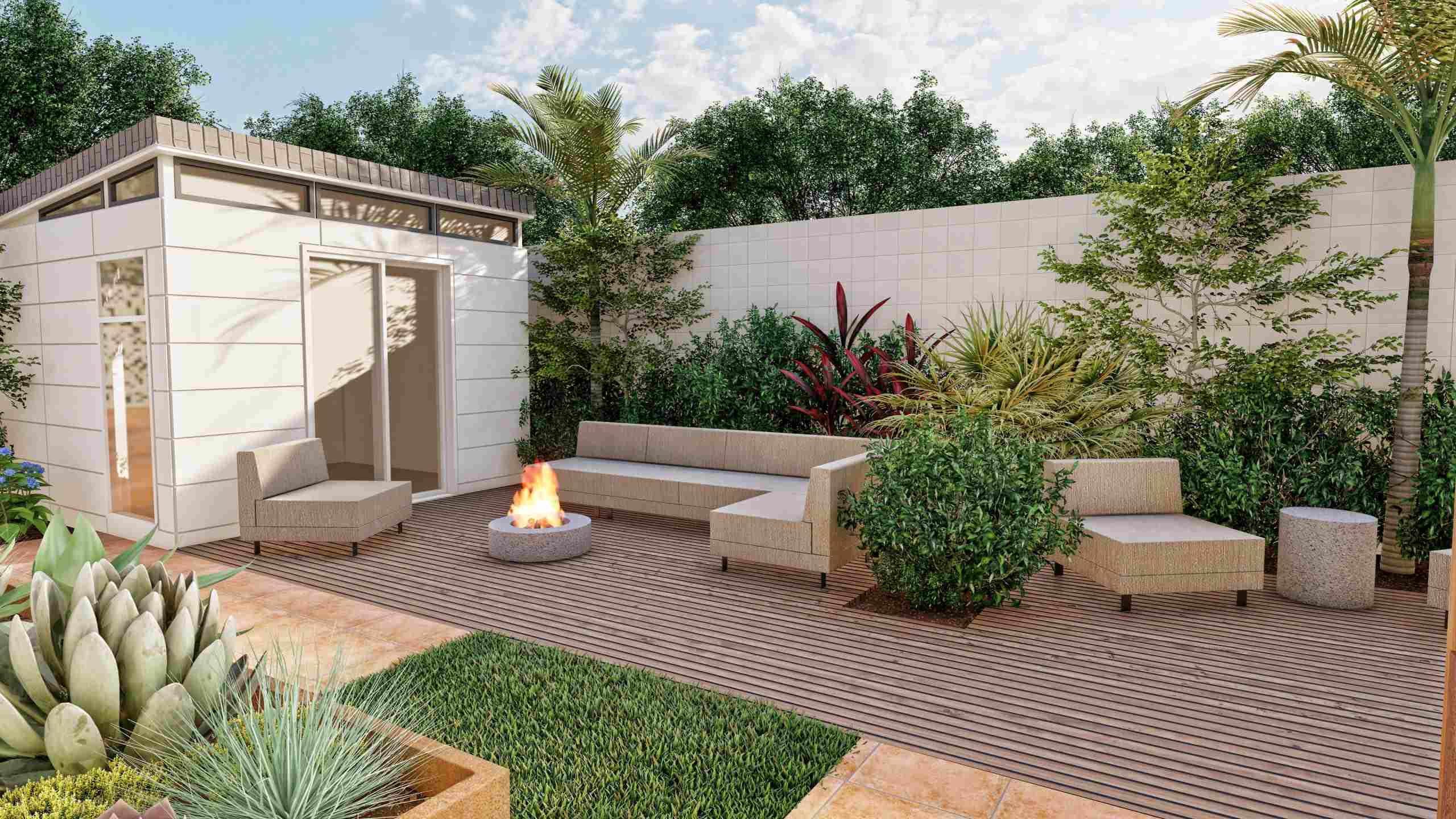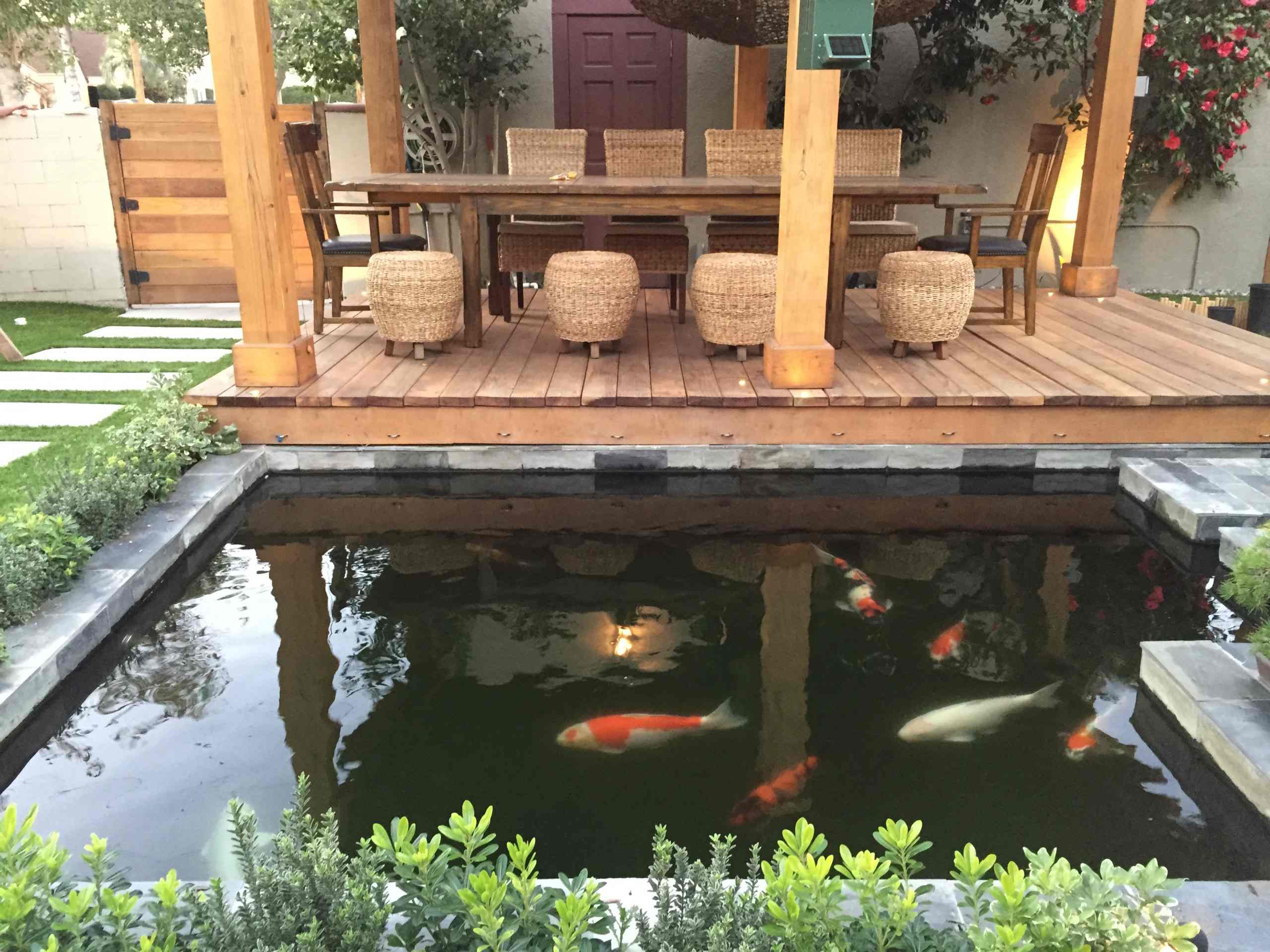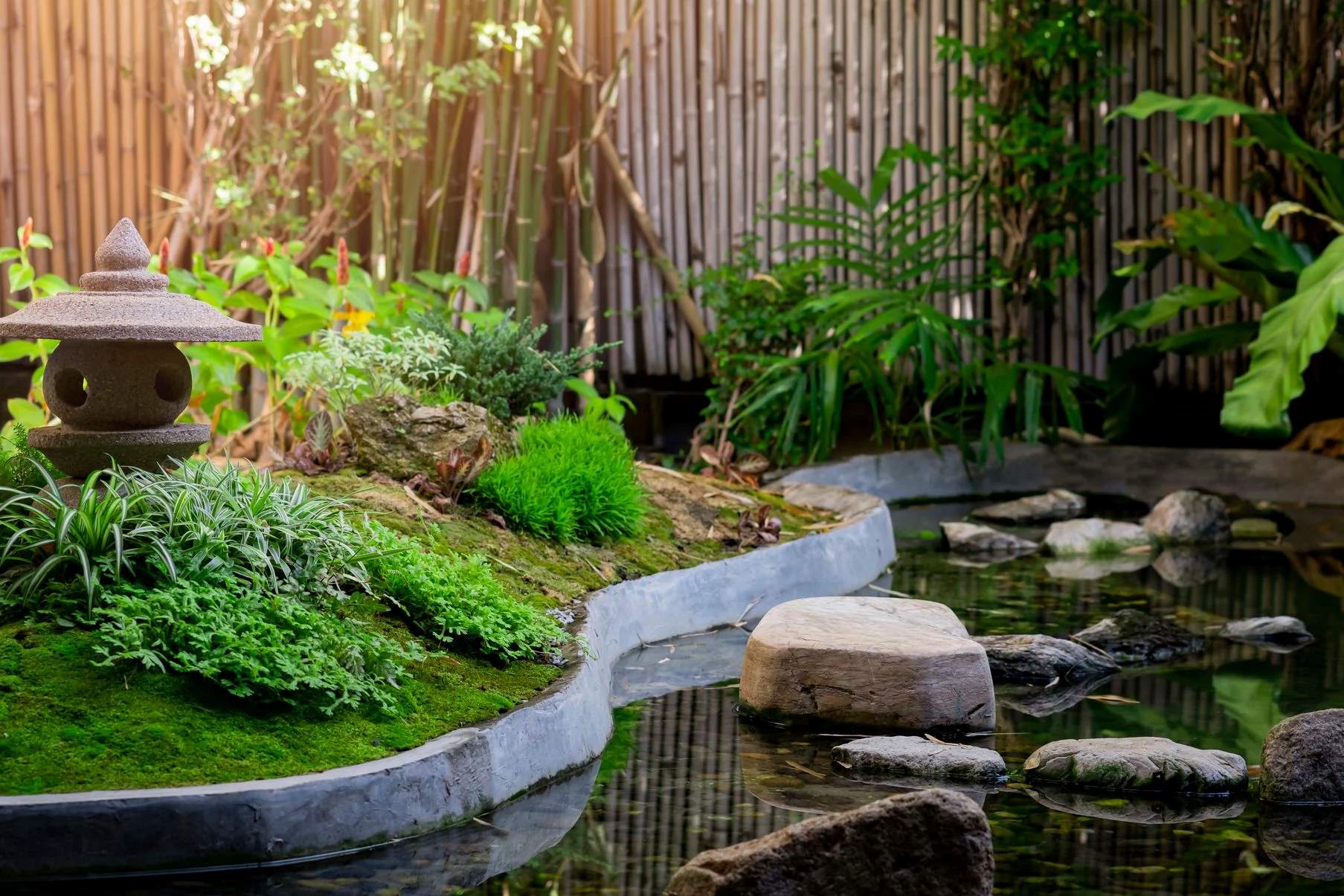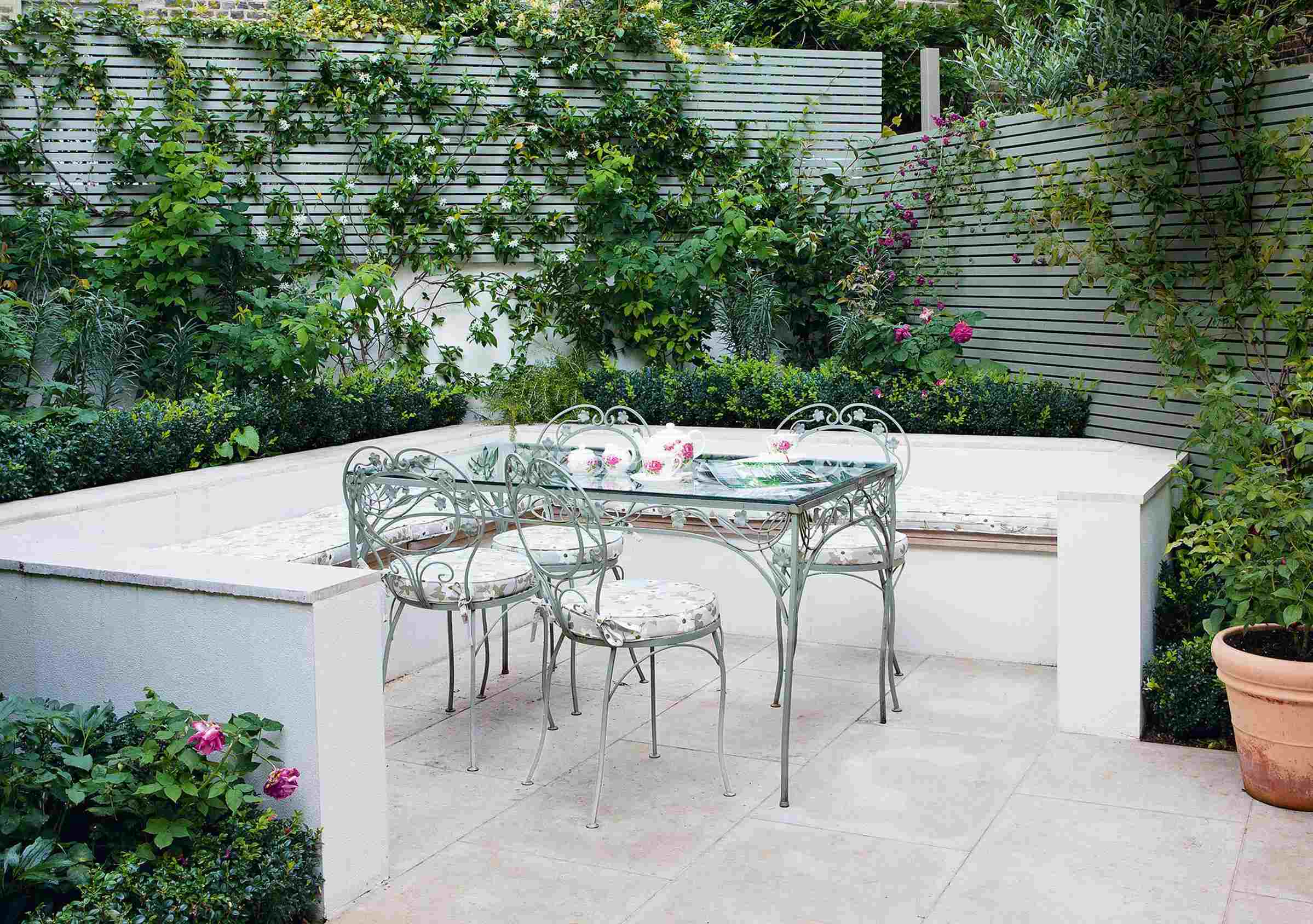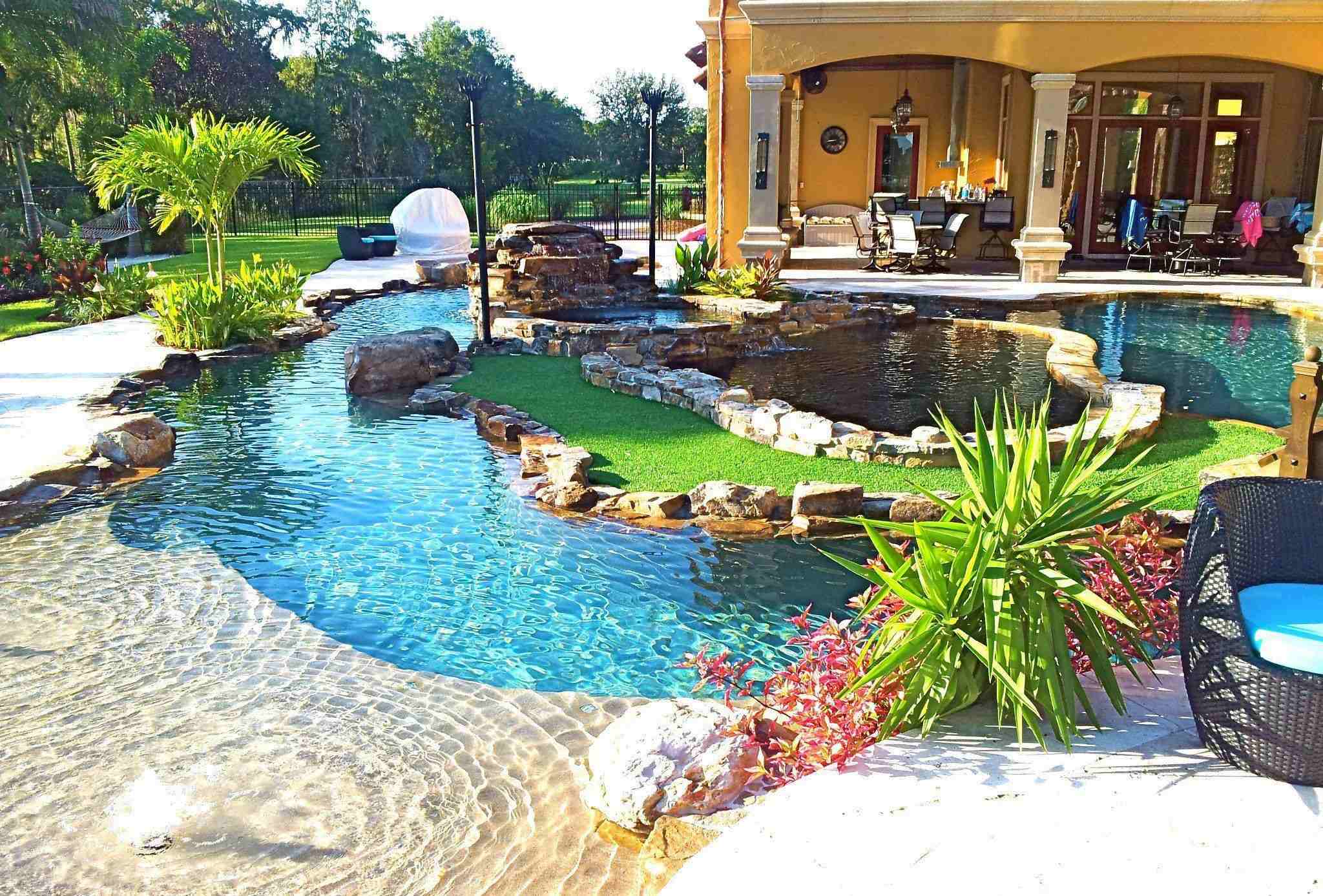Home>Gardening Techniques>DIY Projects>How To Make A Play Area In The Backyard
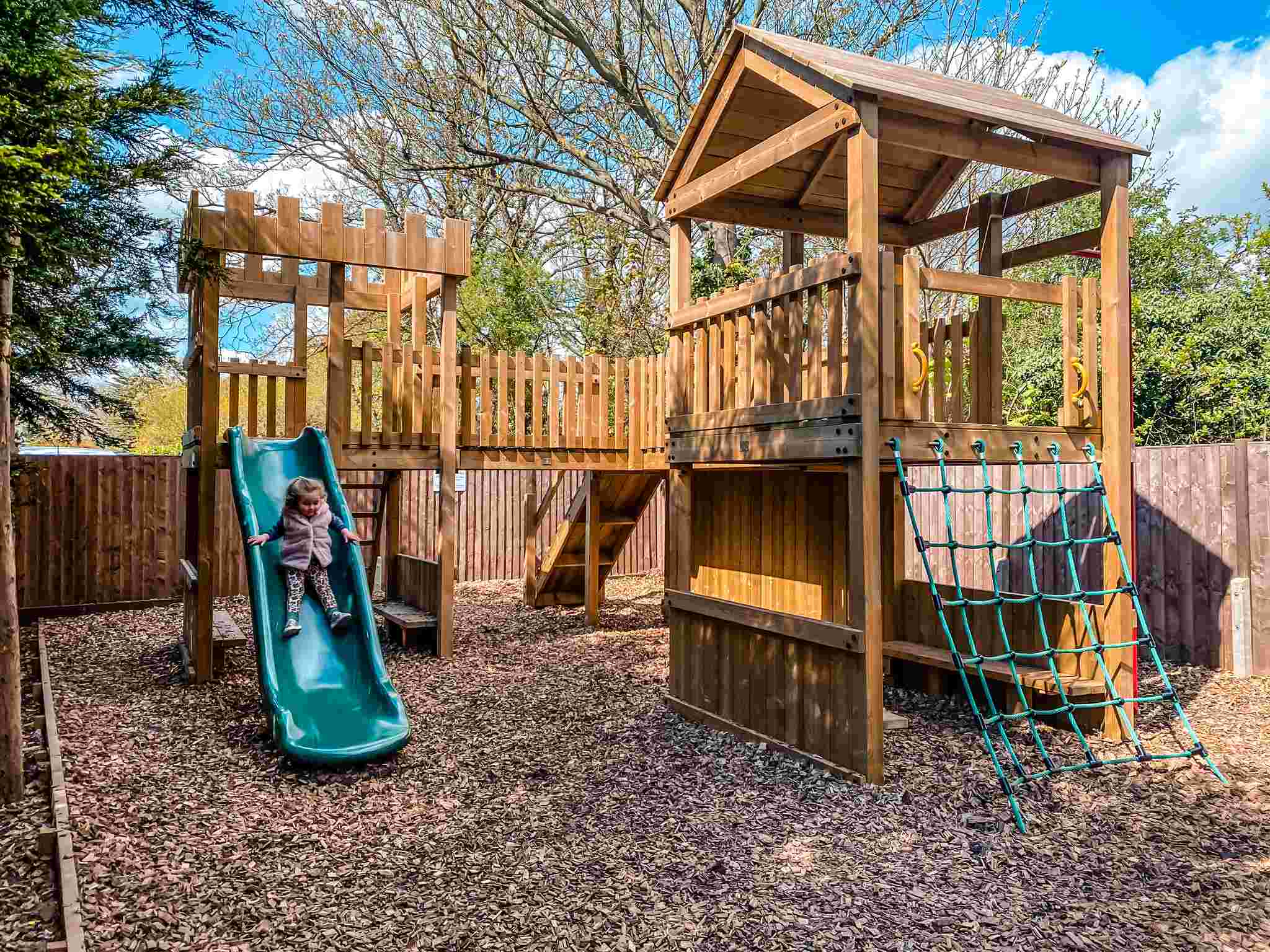

DIY Projects
How To Make A Play Area In The Backyard
Modified: January 22, 2024
Discover how to create a DIY play area in your backyard with our innovative projects and unleash hours of fun for your kids.
(Many of the links in this article redirect to a specific reviewed product. Your purchase of these products through affiliate links helps to generate commission for Chicagolandgardening.com, at no extra cost. Learn more)
Table of Contents
- Introduction
- Step 1: Assess the backyard space
- Step 2: Determine the play area’s purpose and features
- Step 3: Choose the appropriate play equipment
- Step 4: Clear and prepare the designated play area
- Step 5: Install necessary safety measures
- Step 6: Set up the play equipment
- Step 7: Add additional elements
- Step 8: Create seating and resting areas
- Step 9: Add finishing touches
- Conclusion
Introduction
Welcome to the wonderful world of DIY backyard projects! Creating a play area in your backyard is a fantastic way to provide hours of fun and entertainment for you and your family. Whether you have little ones who love to run, jump, and slide, or if you simply want to create a space for relaxation and outdoor activities, a backyard play area can be customized to suit your needs and preferences.
Building a play area in your backyard not only offers convenience and accessibility but also allows you to design a space that reflects your unique style and encourages creativity and imagination. Plus, with a little imagination and some DIY skills, you can save money compared to purchasing pre-made play equipment and create a truly unique play area that will be the envy of the neighborhood.
In this comprehensive guide, we will take you through the step-by-step process of creating a play area in your backyard. From assessing the space and determining the play area’s purpose to selecting the right play equipment and incorporating safety measures, we will provide you with all the information you need to bring your backyard play area vision to life.
So, grab your gardening gloves and let’s dive into the world of DIY backyard projects. Get ready to create a play area that will not only provide endless hours of entertainment but also become a cherished space for memories to be made and shared with your loved ones. Let the fun begin!
Step 1: Assess the backyard space
Before diving into the creation of your backyard play area, take some time to assess the available space. Understanding the layout and dimensions of your backyard will help you make informed decisions about the design and placement of your play equipment.
Start by measuring the total area of your backyard. Consider any existing structures, such as fences, trees, or sheds, that may affect the available space for your play area. Note any uneven terrain or slopes that could impact the installation of play equipment.
Next, think about the overall layout of your play area. Consider factors such as proximity to your house, access to utilities like water and electricity, and the positioning of nearby windows or doors that may affect visibility and safety.
Additionally, identify any potential hazards or obstacles in the backyard, such as sharp objects, poison ivy, or low-hanging branches. Take note of any areas that may need to be cleared or modified to ensure a safe and accessible play environment.
When assessing the space, also consider the age and needs of the children who will be using the play area. For younger children, you may want to prioritize a flat and easily supervised area, while older children may appreciate more challenging terrain or additional room for sports activities.
Lastly, take into account the climate and weather conditions in your area. Consider elements like shade, wind protection, or drainage requirements when designing your play area to ensure year-round enjoyment.
By thoroughly assessing your backyard space, you can gain a clear understanding of the potential limitations and opportunities for your play area. This knowledge will guide your decision-making process as you move forward in creating a fun and functional space for outdoor play. So put on your thinking cap and let’s design the backyard play area of your dreams!
Step 2: Determine the play area’s purpose and features
Once you have assessed the space, it’s time to determine the purpose and features of your backyard play area. Consider the ages and interests of the children who will be using the space, as well as any specific activities or themes you want to incorporate.
First, think about the primary purpose of the play area. Will it be a space for active play, such as climbing, swinging, and sliding? Or do you envision a more imaginative play area, with spaces for forts, sandboxes, or water play? Determining the main purpose will help guide your decision-making process later on.
Next, consider the specific features you would like to include in your play area. Common features may include swings, slides, climbing structures, and playhouses. If you have older children, you might want to include elements like a basketball hoop, a trampoline, or a sports court. For younger children, you may want to incorporate sensory elements like a water table, a mini-garden, or a nature exploration area.
Don’t forget about the importance of shade in your play area. You can incorporate features like a pergola, shade sails, or a nearby tree for natural shade. Providing a shaded area will protect your children from excessive sun exposure and make their playtime more comfortable.
Additionally, consider the overall theme or aesthetic you want to achieve in your play area. Do you want a rustic and natural feel, or a vibrant and colorful space? You can incorporate landscaping elements like flower beds, grassy areas, or even small trees to enhance the overall ambiance.
Keep in mind that as children grow, their interests and needs may change. Therefore, it can be beneficial to design a play area that can evolve with them. Consider incorporating adjustable features or adding space for future upgrades or additions.
By determining the purpose and features of your play area, you can create a space that meets the needs and interests of your children while adding an extra touch of personalization. So let your creative juices flow and start envisioning the play area that will bring joy and fun to your backyard!
Step 3: Choose the appropriate play equipment
Now that you have a clear idea of the purpose and features of your play area, it’s time to choose the appropriate play equipment to bring your vision to life. With a wide range of options available, selecting the right equipment will ensure optimal enjoyment and safety for your children.
Start by considering the age and abilities of the children who will be using the play area. For younger children, choose equipment that is age-appropriate, with lower platforms, shorter slides, and secure swings. Older children may require more challenging equipment, like taller climbing structures or sports elements such as basketball hoops or soccer goals.
Consider the space available and how well the play equipment will fit within it. Measure the dimensions of the equipment and ensure that it will not overcrowd the area or restrict movement. Allocate enough space between play equipment to allow for safe play and supervision.
Another crucial aspect to consider is safety. Look for play equipment that meets safety standards and is durably constructed. Ensure that the equipment has proper weight limits and safety features such as handrails, secure footing, and rounded edges. If possible, choose equipment that has been tested and certified by recognized safety organizations.
Think about the materials used in the construction of the play equipment. Opt for equipment made from sturdy and weather-resistant materials like metal or high-quality plastic. Avoid equipment made from materials that can easily rust, break, or deteriorate over time. Additionally, consider the maintenance requirements for the equipment and choose options that are easy to clean and maintain.
Remember to also take into account your budget. Play equipment can vary significantly in cost, so it’s essential to establish a budget and stick to it. Consider whether you want to invest in long-lasting equipment that can be used for many years, or if you prefer more temporary installations that can be easily replaced or modified as your children grow.
Lastly, involve your children in the decision-making process. Take their preferences and interests into account when selecting the play equipment. This will ensure their excitement and engagement with the play area and encourage active and imaginative play.
By carefully choosing the appropriate play equipment, you can create a safe and engaging play area that will provide endless hours of fun and excitement for your children. So let the browsing and shopping begin as you bring your backyard play area one step closer to reality!
Step 4: Clear and prepare the designated play area
With your chosen play equipment in mind, it’s time to clear and prepare the designated play area in your backyard. This step is essential to ensure the safety and functionality of your play area, as well as create a visually appealing space.
Start by removing any existing debris, including rocks, branches, or weeds that may be present in the designated area. Clear the space thoroughly to provide a clean and level surface for the installation of your play equipment.
If you have grass in the play area, consider whether you would like to keep it or remove it. Grass can provide a natural and cushioned surface for play, but it may require regular maintenance and mowing. Alternatively, you may choose to remove the grass and replace it with a soft and safe material like playground mulch, rubber tiles, or artificial turf.
Once the area is cleared, assess the soil condition. If it is compacted or uneven, consider loosening it with a garden fork or rototiller. This will allow for better drainage and promote healthy growth of any plants or grass you choose to include in the play area.
During this step, it’s also important to consider any necessary drainage or irrigation requirements. If your play area is prone to pooling water or becomes excessively wet after rain, consider installing a drainage system or adjusting the grading to ensure proper water flow. Similarly, if your play area lacks natural irrigation, you may need to install a sprinkler system or implement regular watering schedules to maintain any plantings.
Take this opportunity to mark and define the boundaries of the play area. This can be done using landscape edging, fencing, or natural elements like shrubs or trees. Clearly defining the play area will not only enhance its appearance but also provide a sense of enclosure and safety for your children.
If desired, consider adding extra features or elements during the preparation stage. This could include elements like stepping stones, pathways, or seating areas. These additional touches can add character and functionality to your play area while making it more inviting for both children and adults.
By clearing and preparing the designated play area, you are laying the foundation for a safe and inviting space for your children’s playtime. So roll up your sleeves and get ready to transform your backyard into a haven of fun and adventure!
Step 5: Install necessary safety measures
Ensuring the safety of your children is of utmost importance when creating a backyard play area. In step 5, we will focus on installing necessary safety measures to provide a secure and protected environment for your little ones.
Start by evaluating the area surrounding the play equipment. Clear away any potential hazards, such as sharp objects, rocks, or tripping hazards. Remove any poisonous plants or thorny bushes that may cause harm. By creating a hazard-free zone, you can minimize the risk of accidents and injuries.
Next, consider installing a shock-absorbing surface beneath the play equipment. This can help cushion falls and reduce the severity of injuries. Options include materials like rubber mulch, wood chips, sand, or soft play mats. Ensure that the chosen material meets safety standards and provides adequate impact protection.
Inspect the play equipment for stability and structural integrity. Make sure all bolts, screws, and connections are secure. Tighten any loose components and replace any damaged or worn-out parts. Ensure that there are no sharp edges or protrusions that could cause harm to your children.
If your play equipment includes swings, install soft and impact-absorbing surfacing around the swing set. This can be in the form of rubber mats, sand, or engineered wood chips. The surfacing should extend a sufficient distance around the swings to provide a safe landing area.
Consider installing a barrier or safety fence around the play area to prevent children from wandering into unsafe zones. This is particularly critical if your play area is located near a road or other potential hazards. Ensure that the fence is sturdy, of an appropriate height, and secure with child-proof latches.
Place clear and visible safety signage within the play area to remind children and adults of any rules or guidelines. Include reminders about proper use of equipment, age restrictions, and adult supervision requirements.
Remember to regularly inspect and maintain the safety measures in your play area. Check the flooring for any signs of wear or damage and repair or replace as necessary. Regularly inspect the play equipment for any structural issues or potential hazards.
By installing necessary safety measures, you can create a play area that prioritizes the well-being of your children. Taking these precautions will give you peace of mind knowing that your little ones can freely enjoy their playtime in a protected and secure environment.
Step 6: Set up the play equipment
Now that you have prepared the play area and ensured its safety, it’s time to set up the play equipment. This step will bring your backyard play area to life and provide endless opportunities for active play and enjoyment.
Start by carefully following the manufacturer’s instructions for assembling the play equipment. Take your time to ensure that all pieces are properly connected and secured. It may be helpful to have a second person assist you during the setup process for larger or more complex equipment.
Pay attention to the placement of the play equipment, considering factors such as accessibility, visibility, and space for freedom of movement. Avoid positioning equipment too close to fences, trees, or other structures that may limit the play area or pose a safety risk.
Place swings and other moving components at a safe distance from other play equipment and structures to prevent collisions. Ensure that there is ample clearance around slides, ladders, and climbing frames to allow for comfortable play and safe access.
Once the play equipment is set up, test its stability and ensure that it can withstand the weight and movements of the intended users. Double-check that all safety features, such as handrails, non-slip steps, or safety barriers, are secure and functioning correctly.
Take a moment to observe the play equipment from different angles and positions. Ensure that there are no potential entrapment areas or pinch points that could cause injury. Remove any sharp objects, screws, or exposed hardware that may pose a risk to children.
Consider adding additional features or accessories to enhance the play experience. This could include elements like a telescope, a steering wheel, or a chalkboard panel. These small additions can ignite your child’s imagination and make their playtime even more engaging.
Finally, encourage your children to explore and familiarize themselves with the play equipment. Teach them how to use it safely and establish basic rules for play. Emphasize the importance of taking turns, avoiding rough behavior, and always using the equipment as intended.
By setting up the play equipment with care and attention to detail, you are bringing the magic of play to your backyard. With all the pieces in place, your children can now embark on countless adventures and create unforgettable memories in their very own play area.
Step 7: Add additional elements
With the play equipment set up, it’s time to add some extra elements to enhance the overall experience of your backyard play area. These additional touches can add excitement, creativity, and functionality to the space, making it even more enjoyable for your children.
Consider incorporating elements of nature into the play area. Planting flowers, shrubs, or small trees can add beauty and provide a sense of natural ambiance. Choose plants that are child-friendly and non-toxic, and ensure they are placed strategically to avoid obstructing the play equipment or posing a hazard.
You may also want to include sensory elements such as a sensory table or a mud kitchen. These allow children to explore different textures, engage their senses, and encourage creative and imaginative play. You can provide materials like sand, water, or natural objects, allowing children to experiment, create, and learn through tactile experiences.
Another great addition to the play area is a dedicated space for art and creativity. Consider installing an outdoor chalkboard, an easel, or a painting wall where children can freely express their artistic talents. Provide plenty of art supplies such as chalk, paints, brushes, and water-based markers to inspire their creativity and allow for endless artistic expression.
If space permits, create a mini-garden where children can learn about plants, vegetables, and the concept of sustainable living. Involve them in the process of planting seeds, nurturing plants, and harvesting produce. This not only provides a hands-on learning experience but also teaches them the importance of caring for nature and the environment.
Incorporate seating areas within the play area to provide parents and caregivers with a comfortable place to supervise and engage with their children. This can be in the form of benches, picnic tables, or even cozy outdoor lounge chairs. Ensure that the seating is positioned in a way that allows for clear visibility of the play area.
Consider adding storage solutions to keep toys, balls, and other play equipment organized and easily accessible. This can be in the form of a storage bench, storage bins, or hanging organizers. Keeping the play area neat and tidy not only promotes safety but also encourages responsibility and good habits in your children.
Don’t forget to add some decorative elements to personalize the play area. Hang colorful wind chimes, install outdoor lights, or display playful yard ornaments to create a visually appealing space. Consider involving your children in choosing and arranging these elements to foster a sense of ownership and pride in their play area.
By adding these additional elements, you are transforming your backyard play area into an inviting and engaging space. Children will have the opportunity to explore nature, express their creativity, and engage in imaginative play, all within the comfort of their own backyard.
Step 8: Create seating and resting areas
In addition to the play equipment and additional elements, it’s important to create seating and resting areas within your backyard play area. These spaces provide a comfortable and inviting atmosphere for both children and adults to relax, socialize, and take breaks during playtime.
Start by selecting the appropriate seating options for your play area. This can include benches, outdoor chairs, or even picnic tables. Choose furniture that is durable, weather-resistant, and comfortable. Consider options with cushions or outdoor pillows to enhance the coziness factor.
Position the seating strategically to allow for optimal visibility of the play area. This way, parents and caregivers can easily supervise the children while taking a moment to rest. Additionally, ensure that the seating is placed in shaded areas to provide relief from the sun during hot summer days.
Create a designated resting area where children can take breaks and recharge. This can be a cozy corner with soft cushions, bean bags, or a hammock. Adding a shade sail or umbrella above the resting area can provide additional protection from the sun.
Incorporate a small outdoor table or snack station where children can have a quick snack or take a break for a drink of water. Include a water dispenser or a small cooler filled with refreshing beverages to keep children hydrated during active play.
Enhance the comfort of the seating and resting areas by adding decorative elements like outdoor rugs or mats. These not only add a touch of style but also provide a soft surface for children to sit or lie down on. Choose materials that are water-resistant, easy to clean, and safe for outdoor use.
Consider incorporating storage solutions within the seating and resting areas to keep essentials like sunscreen, hats, and toys organized and within reach. This will help minimize clutter and promote a tidy play area.
Make the seating and resting areas inviting and visually appealing by adding some decorative elements. Hang string lights, hang wind chimes, or place potted plants to create a cozy and inviting atmosphere. Encourage your children to decorate these spaces with their own artwork or craft projects to add a personalized touch.
By creating seating and resting areas within your play area, you are providing a space for relaxation, socialization, and rejuvenation. Both children and adults can take a break from play and enjoy some quiet moments or engage in conversations, making the backyard play area a truly enjoyable and well-rounded space.
Step 9: Add finishing touches
As you near the completion of your backyard play area project, it’s time to add those final details and finishing touches that will truly bring the space to life. These small enhancements will add charm, functionality, and a touch of personalization to your play area.
Create visual interest by adding landscaping elements around the play area. Plant colorful flowers, shrubs, or ornamental grasses to create a vibrant and inviting atmosphere. Consider using pots or hanging planters to add height and texture to the space.
Install outdoor lighting to illuminate the play area during the evenings or to create a magical ambiance. Use solar-powered lights, string lights, or pathway lighting to guide the way and ensure safe play, even when the sun goes down.
Add educational elements to encourage learning and exploration in your play area. Incorporate a weather station, a small vegetable garden, or signs with fun facts about plants, animals, or the environment. Stimulating curiosity and fostering a love for learning can be integrated seamlessly into playtime.
Consider incorporating a shade sail or canopy over the play equipment to provide additional shade and protect children from direct sunlight. This is especially important during hot summer months when extended play sessions can lead to overheating.
Include storage options for toys, outdoor games, and other play equipment. This can be in the form of durable storage boxes, bins, or even a small shed. Keeping the play area organized will make cleanup easier and ensure a clutter-free space.
Personalize the play area by adding a sign, a nameplate, or a mural. This adds a special touch and makes the space feel uniquely yours. Involve your children in the design process and let their creativity shine through.
Consider adding an outdoor sound system or a Bluetooth speaker for playing music or audio stories during playtime. This can create a fun and entertaining atmosphere, making playtime even more enjoyable for your children and their friends.
Lastly, regularly update and refresh the play area by rotating toys, adding new elements, or adjusting the layout. This helps keep the play area exciting and encourages continued exploration and creativity.
By adding these finishing touches, you can transform your backyard play area into a space that is not only functional and safe but also visually appealing and personalized. These small details will elevate the play experience and create a space where lifelong memories are made.
Conclusion
Congratulations! You have successfully gone through the step-by-step process of creating a play area in your backyard. By following these steps, you have transformed your outdoor space into a haven of fun, imagination, and endless play opportunities for your children.
From assessing the backyard space and determining the play area’s purpose to choosing the right play equipment, installing safety measures, and adding finishing touches, you have truly created a space that caters to the needs and interests of your children.
Remember that safety should always be a top priority. Regularly inspect and maintain the play area and equipment to ensure they remain safe and in good condition. Supervise children during playtime and establish clear rules and boundaries to promote safe and responsible play.
Don’t forget to enjoy the fruits of your labor! Spend quality time with your family in the play area, engaging in active play, imaginative adventures, and making cherished memories. Let the sounds of joy and laughter fill the air as your children explore, learn, and grow in your newly created backyard play area.
Continue to evolve and adapt the play area as your children’s interests and needs change. With their input, you can make updates, add new elements, or create new play zones to keep the space fresh and exciting for years to come.
So go ahead, step outside into your backyard play area, and let the magic of play unfold. Witness the joy, creativity, and growth that flourish in this special space you have created. Embrace the freedom of the outdoors, the wonders of imagination, and the moments of connection that happen in your new backyard play area.
Now, it’s time to embrace the adventure and start enjoying countless hours of fun and laughter in your very own backyard play area. Get out there and play!
